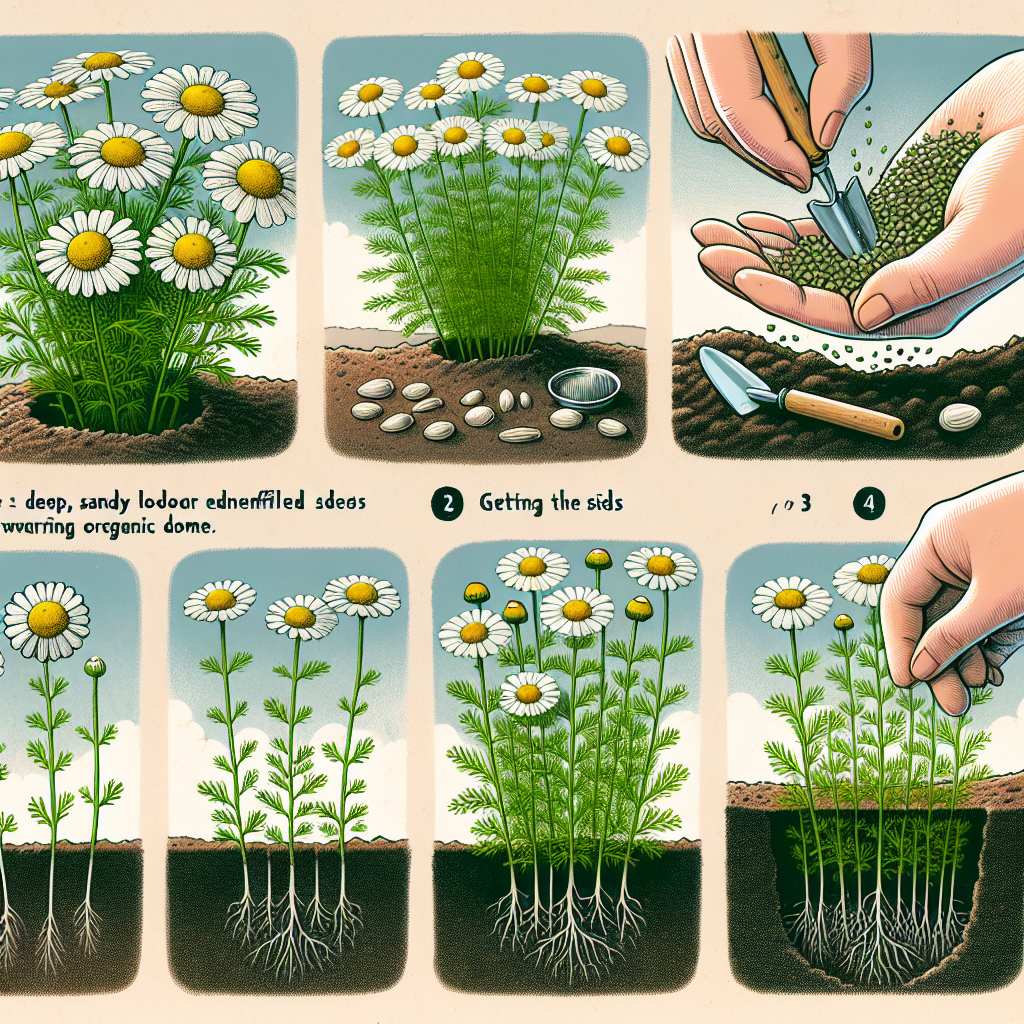
How to plant chamomile
The Wonderful World of Chamomile: A Comprehensive Guide
Chamomile is one of the most beloved herbs in the garden, cherished for its delicate flowers and calming properties. This aromatic plant not only adds beauty to your herb garden, but also offers a variety of health benefits. In this article, we’ll explore everything you need to know about establishing your very own chamomile plants, including its types, growing conditions, and care tips.
Types of Chamomile
Before diving into the specifics of how to plant chamomile, it's essential to know the two primary types of chamomile that gardeners typically cultivate:
- German Chamomile (Matricaria chamomilla) - Often used for herbal teas, this annual herb grows anywhere from 12-24 inches tall and produces white petal flowers with a yellow center.
- Roman Chamomile (Chamaemelum nobile) - This perennial herb has a more creeping growth habit and is often used as ground cover. Its flowers are similar to German chamomile but are more robust and fragrant.
Growing Conditions for Chamomile
Chamomile is a hardy plant and can be grown in various conditions. However, setting the stage with the right environment will ensure a thriving plant:
- Sunlight: Chamomile flourishes in full sunlight, requiring between 6 to 8 hours of direct sunlight daily.
- Soil: Use well-draining soil with a pH of 6.0 to 7.0. Chamomile prefers sandy or loamy textures.
- Water: Regular watering is important, particularly in dry spells, but avoid waterlogging.
- Temperature: Chamomile is resilient and can grow in a range of temperatures, but 60-68°F (15-20°C) is ideal.
How to Plant Chamomile
Now that you’re familiar with the types of chamomile and their growing requirements, let’s delve into the steps on how to plant chamomile.
Step 1: Choosing Seeds or Seedlings
You can start chamomile by either direct seeding or transplanting seedlings. Purchasing seeds is often more economical and rewarding. Make sure to choose high-quality seeds from a reputable source.
Step 2: Timing Your Planting
For optimal growth, plant chamomile:
- In the spring after the last frost for direct sowing.
- 8-10 weeks before the last frost if starting indoors.
Step 3: Preparing the Garden Bed
Prepare your garden bed by:
- Turning the soil at least 12 inches deep to loosen it up.
- Mixing in compost or well-rotted manure to enrich the soil.
- Raking the surface to create a level planting area.
Step 4: Sowing the Seeds
If you're direct sowing:
- Sow the seeds about 1/4 inch deep into the soil.
- Space the seeds approximately 8-10 inches apart to allow for growth.
- Lightly cover the seeds with soil and gently water to settle them in.
If you're transplanting seedlings:
- Harden the seedlings off by placing them outdoors for several hours each day for a week.
- Dig holes in the prepared soil that are slightly larger than the root ball.
- Gently place the seedlings in the holes and fill with soil.
- Water them well after transplanting.
Care Tips for Chamomile
After planting, ongoing care is essential for healthy chamomile growth:
Watering
Keep the soil moist but not soggy. Water chamomile in the morning to prevent diseases that can occur from wet foliage overnight.
Fertilizing
Chamomile usually does well with minimal fertilization. If desired, apply a balanced, organic fertilizer once during the growing season.
Mulching
Applying a layer of mulch helps retain soil moisture and suppress weeds. Aim for 2-3 inches of organic mulch, such as straw or wood chips.
Pest Management
Chamomile is generally pest-resistant, but you may encounter issues with aphids or caterpillars. Use organic insecticidal soap or introduce beneficial insects like ladybugs to keep pests at bay.
Pruning and Harvesting
Regularly deadhead wilted flowers to encourage further blooming. Harvest chamomile flowers in the morning when they are fully open. Use scissors to snip them off just above the foliage.
Uses for Chamomile
Once you’ve grown and harvested chamomile, there are numerous ways to use it:
- Herbal Tea: Dried chamomile flowers make soothing herbal teas.
- Aromatherapy: Chamomile essential oil can be used in diffusers for its calming scent.
- Skincare: Chamomile-infused oils and creams can help skin irritation and promote healing.
Conclusion
Planting chamomile is not only a rewarding gardening endeavor, but it also provides you with a multitude of benefits. By understanding how to plant chamomile properly and caring for it, you’re setting the stage for a bountiful herb harvest. With its delightful fragrance and versatile uses, chamomile is an excellent addition to any garden.
So grab your gardening tools and get started on your chamomile adventure—your senses will thank you!
By Guest, Published on October 8th, 2024